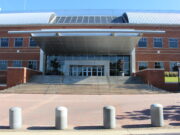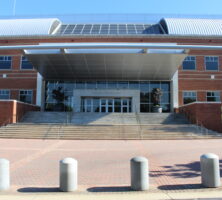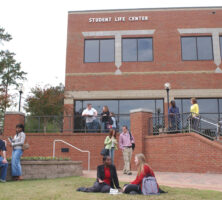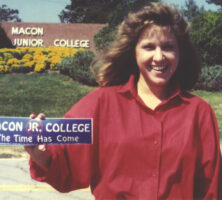Note from the Editors: In January 2013 Macon State College merged with Middle Georgia College to form Middle Georgia State College (later Middle Georgia State University). This article chronicles the history of Macon State College from its founding until the time of the merger.
Macon State College in Macon is a four-year public college within the University System of Georgia. It was established in 1968 as Macon Junior College under Governor Carl Sanders’s program to locate public colleges within commuting distance of all Georgians; it became a four-year institution in 1996. The school offers seven four-year Bachelor of Science degrees, a variety of two-year associate degrees, and eight certificates.
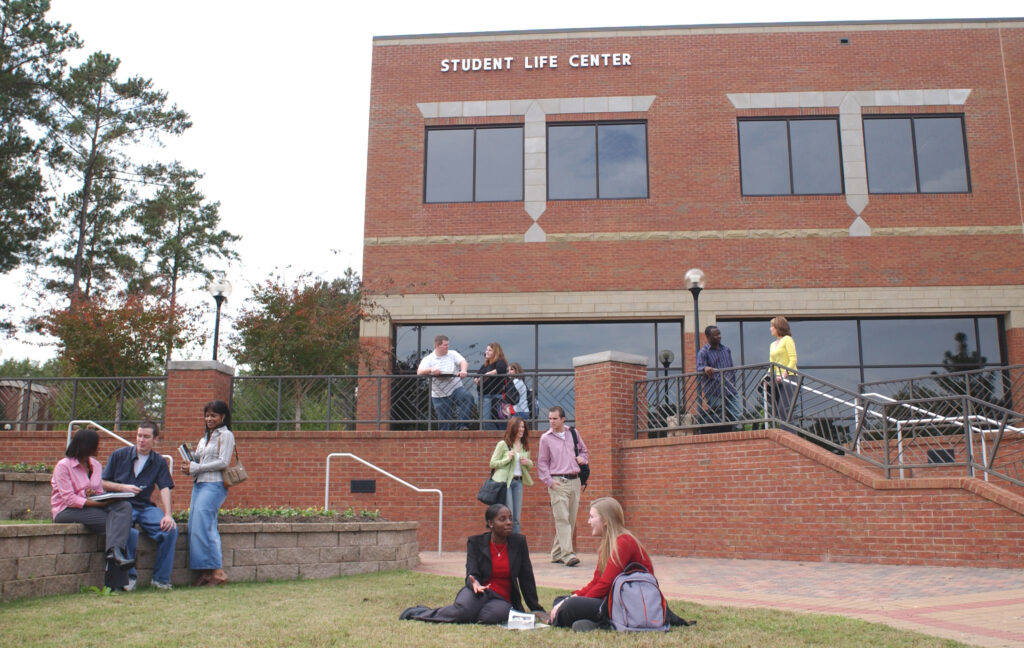
Courtesy of Macon State College
History
The college’s first president was Jack Carlton, a professor of chemistry. Carlton’s administration (1967-72) was marked by both growth and emphasis on high grading standards and well-qualified faculty. Enrollment increased from 1,110 in the first year to 1,631 by the fall of 1972. In 1972 the Robins Resident Center on Robins Air Force Base at Warner Robins was opened to offer classes for Macon Junior College and two of its sister institutions.
Carlton resigned in 1972 to accept a university presidency and was succeeded by William W. Wright, an economist who had served as Carlton’s dean. Wright’s presidency (1972-84) was characterized by careful and consistent monitoring of the college’s work to maintain its high standards. Wright resigned to accept a university deanship, having presided over the college’s growth to 2,828 students in the fall of 1984. Jack Ragland, the college’s comptroller, then became acting president (1984-85) and continued successfully the policies of his predecessors.
At this point in the college’s history, it was apparent that the community strongly favored making Macon Junior College a four-year institution, and S. Aaron Hyatt, the college’s fourth president (1985-97) pursued this goal steadily. Hyatt, a professor of music, achieved the symbolically important name change to Macon College in 1987 and then to legal four-year status in 1997. This success resulted not only from Hyatt’s efforts but also from skillful community and legislative support and from the general prestige of the college in the middle Georgia area.
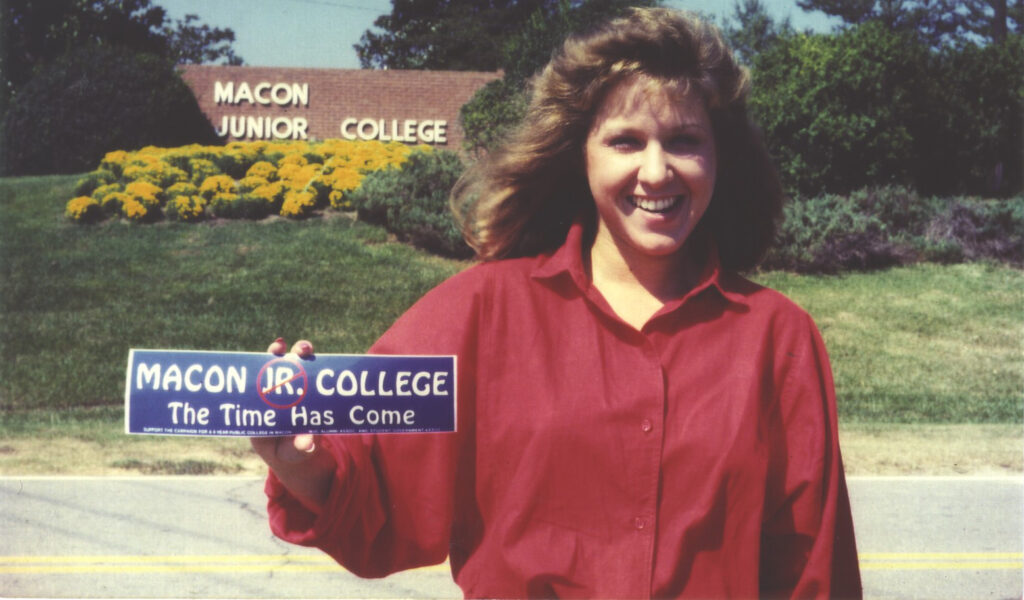
Courtesy of Macon State College
Hyatt resigned in 1997 to accept a position with Rotary International and was succeeded by David Bell, a professor of philosophy. Bell has overseen a successful transition from a two-year to a four-year college by the creation and implementation of four-year programs. The Bell administration has been marked by enrollment growth, campus beautification, excellent community relations, creation of a Warner Robins campus, and the addition of a new state-of-the-art science building on the Macon campus.

Image from Michael Rivera
Curriculum
The four-year degrees—in information technology, business and information technology, communications and information technology, health information management, health services administration, public service, education, and a combined registered nurse–Bachelor of Science in nursing degree—are designed for immediate practical application in the job market. Most graduates of these programs remain in the middle Georgia area, contributing to the area’s growth and development.
The associate degrees prepare students for four-year study either in the liberal arts or in more immediately practical fields. In addition the college offers five certificates in career programs and one cooperative associate degree with area technical colleges.
In fall 2004 the college enrolled 5,733 students with a full- and part-time faculty of 262. The college has three campuses, the largest in Macon, with 13 major buildings on 167 acres. The second largest is in Warner Robins, with two major buildings; the city has granted the campus additional acreage for development. The third campus is the Robins Resident Center on Robins Air Force Base.
Macon State College counts among its graduates a Goldwater Fellowship recipient and two regional finalists in the Truman Scholarship competition. The college has an honors program, Phi Theta Kappa chapter, nationally respected faculty publications, a literary magazine, the Artists and Lecturers Series, and an annual artsfestival, all of which contribute to the college’s solid reputation for academics and cultural enrichment.


